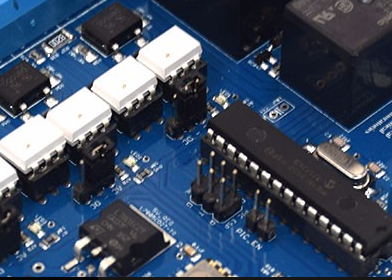"Spectrum View, a frequency domain analysis tool on oscilloscope" mainly introduces the characteristics of Spectrum View. This article will focus on the architecture of Spectrum View and basic content related to FFT, including digital down conversion technology (DDC), spectrum leakage effect, time window, etc. content.
Digital Down Conversion (DDC)
The Spectrum View spectrum analysis function based on the TEK049/TEK061 innovative platform uses digital down-conversion technology to perform FFT after obtaining the digital IQ signal, thus ensuring the flexibility and speed of spectrum testing. Figure 1 shows a schematic diagram of the signal acquisition and processing architecture. After the analog signal is converted into a digital signal by the ADC, the time domain and frequency domain are processed in parallel, so that the time domain and frequency domain capture time can be set independently.
Digital down-conversion is widely used in wireless communication systems. The process of down-conversion is shown in Figure 2, including digital IQ demodulation, low-pass filtering, and sample decimation (or resampling). The local oscillator frequency of the digital IQ demodulator is the same as the center frequency set in the Spectrum View, so as to complete the carrier cancellation to obtain a zero-IF signal; the low-pass filter is used to filter out high-order mixing products, and finally the IQ signal is obtained through sample extraction .
Spectrum View processes digital IQ signals, which is also a major feature compared to traditional FFT. Compared with the original acquisition signal, the frequency carried by the IQ signal is much lower. The IQ data re-sampling does not require a high sampling rate, which greatly reduces the amount of data, and the capture time (Spectrum Time) is not affected, even if a lower RBW is required., Still has a very high processing speed.

For ease of understanding, Figure 3 shows an example of re-sampling I/Q samples. Assuming that the re-sampling rate is 1/5 of the original sampling rate, the re-sampling process is to extract one sample from the five original samples. Process, the process does not change the relative timing relationship, which means that after sample extraction, the same number of samples has a larger Spectrum Time, thereby achieving high frequency resolution.
Spectral Leakage
The FFT transformation is done under certain assumptions, that is, the signal being processed is considered to be periodic. Figure 4 shows a sample waveform of a sine signal. If FFT is performed on Frame 1, the period will be expanded. Obviously, when the period is extended, the discontinuity of the samples is caused. The discontinuity of the samples is equivalent to the discontinuity of the phase, which will lead to the production of additional frequency components. This phenomenon is called spectrum leakage.
Spectrum leakage produces frequency components that are not contained in the original signal. As shown in Figure 5, the frequency of the signal should only be at the dotted line, but because the samples are not continuous, many frequency points are generated after FFT, as shown in the figure. The position of the solid line. Spectrum leakage will disturb the test, especially when observing small signals, the stronger spectrum leakage components may overwhelm the weaker signals.
If you can eliminate sample discontinuities, you can eliminate spectrum leakage. In order to achieve this, it is necessary to introduce a time window (Window), the time window contains the same number of samples as the signal, and the value of the samples at both ends is usually 0. Before FFT, the time window is multiplied by the waveform, and the continuity of the sample points can be guaranteed after the period is extended.